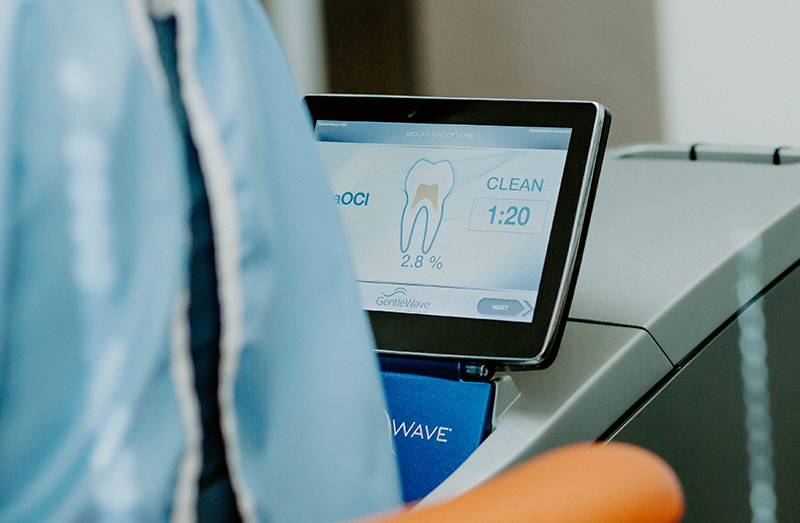My experience with non-instrumented endodontics. Here is what I’ve learned. When new possibilities were introduced in the form of GentleWave®, I took a good, hard look. After much due diligence, I found that this new way of treating was the right decision for my practice. Before I committed to taking the “leap” to introduce this latest advanced endodontic technology into my practice, I had to open my mind and accept that we— my associates and team— would face a lot of change and disruption to our current systems. Not only was there a financial investment to bringing GentleWave into my practice, but my staff had to be re-trained and we needed to implement new systems while maintaining a busy office schedule.
Change brings new opportunities. As it turns out, adopting this new mindset, updating my clinical and scheduling processes, and implementing the most advanced endodontic technology available, opened the door to many wonderful opportunities for my practice, my career and my personal life. Our new way of treating actually lowered my overhead because now we rarely use files. It’s provided a new stream of revenue, increasing my total annual net revenue. And, the new systems I’ve created to streamline scheduling and clinical protocols have reduced stress in my practice so that my team can comfortably treat 9-12 patients a day.
But, most importantly— the patient experience has greatly improved. When you revisit your current systems, you get an opportunity to rethink the patient experience. Patient care is at the core of everything we do. So, when developing new clinical and scheduling protocols, I made sure that our patients would continue to receive a first-class experience. Our reception and clinical team follow a specific flow so to reduce patient anxiety and increase patient comfort. With the addition of GentleWave, the majority of our patients are treated in a single visit (because life is busy enough to see your endodontist twice). There is less pain during and post treatment. I rarely prescribe narcotics anymore and patients report getting back to their normal way of life within a day or two after their procedure.
Quality of life is preserved when natural teeth are saved. One of the most exciting opportunities I’ve witnessed from using GentleWave, is that we now have the ability to save teeth that would have had to be extracted if a traditional root canal could not remove the infection. Further, because of GentleWave, we may no longer need to use files. In fact, I’ve witnessed that even the most calcified canals can be thoroughly cleaned and restored through the power of GentleWave. When we limit our use of files, we keep critical tooth structure intact which supports the longevity of the tooth. Of course, not every tooth can be saved. Some circumstances require extractions, but more often than not we can restore even the most precarious teeth with GentleWave.
No more files? Knowing what we know now about the “GentleWave clean”, we no longer have to worry whether we did “enough” to remove the bacteria and medicate the root system because GentleWave delivers a predictable clean that is efficient and effective. Have you ever looked at the waste canister after the GentleWave was used? Take a peek next time. You’ll see the infection and all the bad bacteria and debris that can be removed in just a short time.
GentleWave does not force the medication into the tooth. This is important for us to wrap our heads around. The system uses negative pressure via Bernoulli’s Principle which states, “that an increase in the speed of a fluid occurs simultaneously with a decrease in static pressure or a decrease in the fluid‘s potential energy.” GentleWave’s technology uses negative pressure to pull the bacteria from every part of the root system, places that files would never be able to reach.
Could it be that the future of endodontics is non-instrumented root canals? We can completely and thoroughly clean a tooth with GentleWave without the need for one file. A statement that would have gotten me laughed out of a room 5 years ago (and maybe still today). I believe that non-instrumented endodontics is where our field is heading. We have the proven technology, all we have to do now is wait and see.

